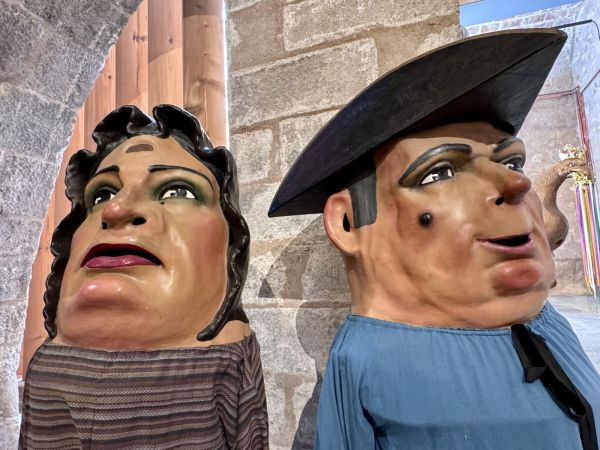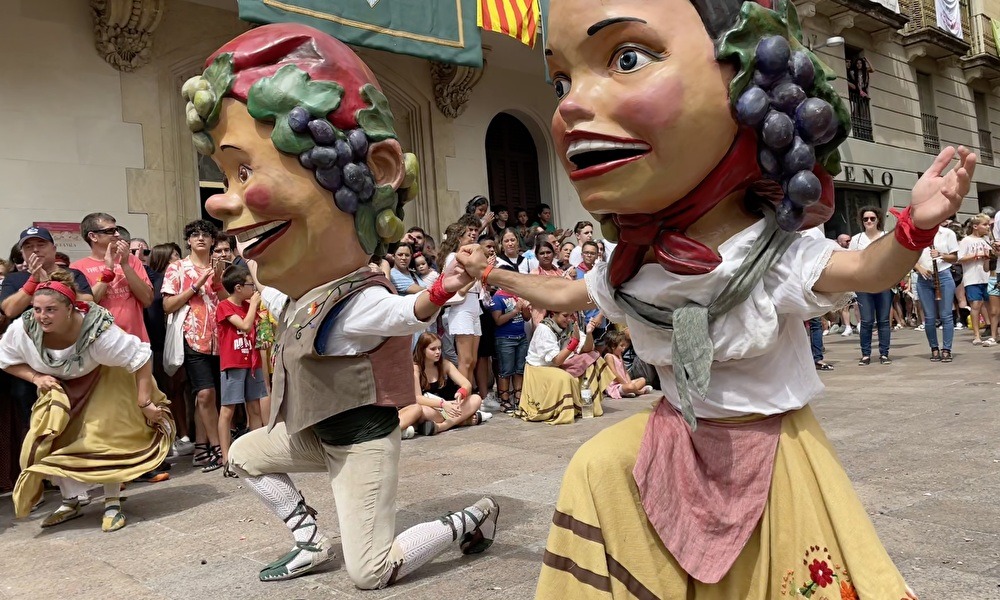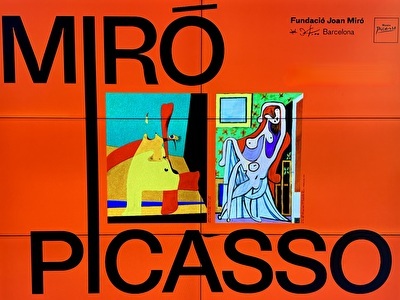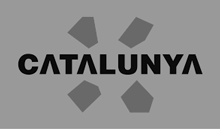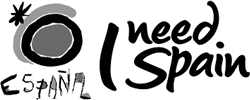Big heads and even bigger stories – the Capgrossos of Catalonia
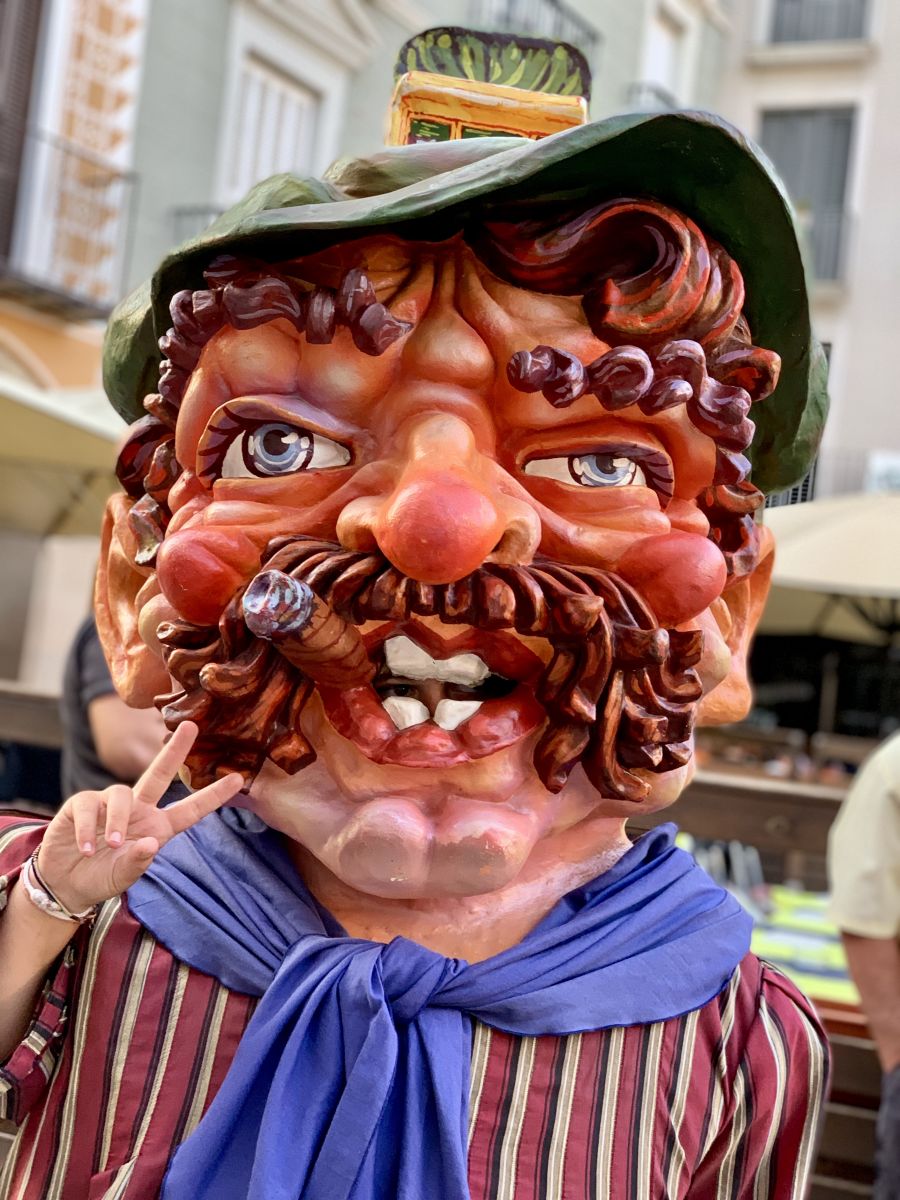
The origins of the capgrossos date back to medieval processions: masks and grotesque figures, performed in religious ceremonies, developed into a repertoire of folk figures, local stories, and social symbols. Since the 19th century, capgrossos have been a staple of village and town festivals: they take on roles—the nobleman, the farmer, the notary, the jester—that the community recognizes, mocks, or respects. Their dance—sometimes playful, sometimes almost puppet-like—expresses neighborhood stories: old crafts, local characters, and sometimes even contemporary, playful nods to politics or sporting heroes. They are now not only part of their heritage but also a living practice: groups (collas) that build them, dance with them, and constantly give the characters new features.

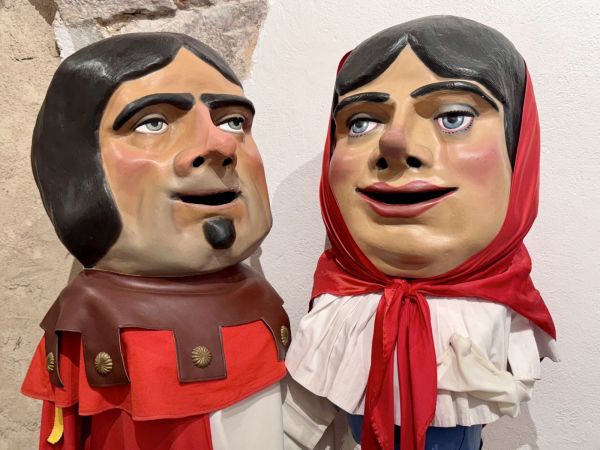
In Vilafranca del Penedès, 25 minutes from Torre Nova, the relationship between capgrossos and the festa major has its own rhythm. This town, famous for its wine tradition and the imposing gegants, also has a rich tradition of capgrossos that accompany the Festa Major. Vilafranca's capgrossos are often designed to be child-friendly, with soft features and recognizable faces. But beneath that sweet exterior lies craftsmanship: making a capgròs requires expertise in papier-mâché, wood construction, and fabric processing, and often a keen sense of timing: which figure will be placed at the center of the procession this year, for a bit of humor?
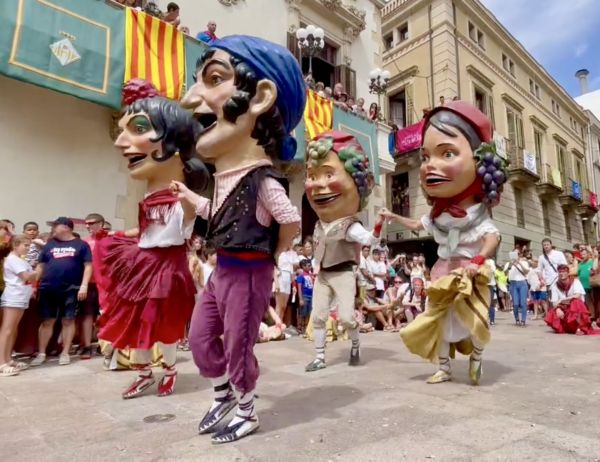
Igualada, 15 minutes from Torre Nova, offers another facet of the same tradition. The capgrossos of Igualada are part of an elaborate festive machine: the week-long Festa Major there features human towers (castells), dragons, devils, and all sorts of folkloric dance groups. The capgrossos participate in the parades, accompanied by music from the local grallers (flutists), and with humorous features that steal the show.

What exactly distinguishes a capgròs from a gegant (giant) or other festive figures? Essentially, capgrossos are smaller—in scale—but larger in expression. While the gegants stride imposingly and stately through the squares, capgrossos are playful, dynamic, and often interactive. They seek contact with the audience, impressing not through height but through facial expressions: swallowing, winking, sticking out their tongues at a councilor—this spontaneous, comical interaction is their strength. Moreover, they are technically easier to carry and more agile, allowing young people and children to actively participate. This participation itself is invaluable: capgrossos are a means of social integration, a community outreach project, and a way to shape local identity.
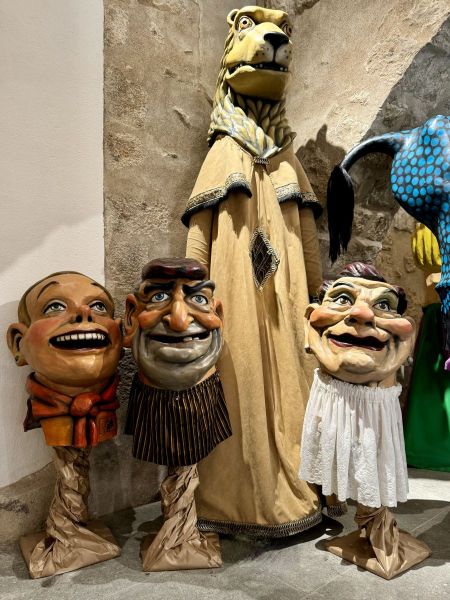

The production of a capgròs is almost always a community effort. Volunteers gather in workshops, club lofts, and community centers to model main parts, mix paint, and sew costumes. Sometimes the figures bear carefully crafted names and backgrounds: an old baker remembered, a mythical figure associated with the patron saint, or a parody of a well-known villager or townsman. In Vilafranca, for example, capgrossos have been returning to the festa major for decades, fulfilling a role in collective memory. This reuse of characters makes them living archives of local stories.
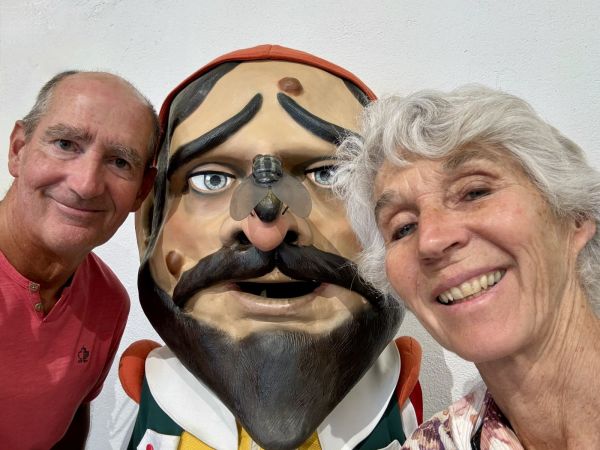
In Girona, the capgrossos offer a stealthy nod to the rich medieval past; in Igualada, they mingle with the castellers and the noisy devils; and in Vilafranca, they play the "nens" roles that children adore. This gives each festa major a unique flavor: the same ingredients, a different flavor. The intersection of craft, play, and community is what makes the capgrossos so special—they are not just puppets, but bridges: between generations, between past and present, between the serious and the hilarious. And as the capgrossos take their final bow before the Festa Major's departure, you know their faces will reappear next year, always recognizable, yet always different.
